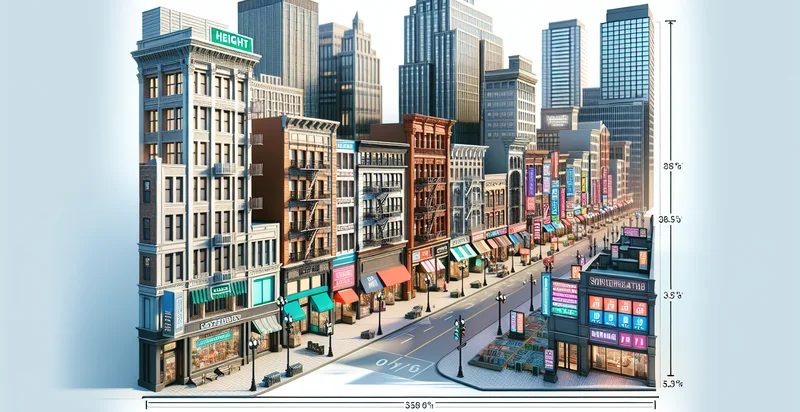Identify height of buildings
using AI
Below is a free classifier to identify height of buildings. Just upload your image, and our AI will predict the height category of buildings in the image - in just seconds.

Contact us for API access
Or, use Nyckel to build highly-accurate custom classifiers in just minutes. No PhD required.
Get started
import nyckel
credentials = nyckel.Credentials("YOUR_CLIENT_ID", "YOUR_CLIENT_SECRET")
nyckel.invoke("height-of-buildings", "your_image_url", credentials)
fetch('https://www.nyckel.com/v1/functions/height-of-buildings/invoke', {
method: 'POST',
headers: {
'Authorization': 'Bearer ' + 'YOUR_BEARER_TOKEN',
'Content-Type': 'application/json',
},
body: JSON.stringify(
{"data": "your_image_url"}
)
})
.then(response => response.json())
.then(data => console.log(data));
curl -X POST \
-H "Content-Type: application/json" \
-H "Authorization: Bearer YOUR_BEARER_TOKEN" \
-d '{"data": "your_image_url"}' \
https://www.nyckel.com/v1/functions/height-of-buildings/invoke
How this classifier works
To start, upload your image. Our AI tool will then predict the height category of buildings in the image.
This pretrained image model uses a Nyckel-created dataset and has 5 labels, including Medium, Short, Tall, Very Short and Very Tall.
We'll also show a confidence score (the higher the number, the more confident the AI model is around the height category of buildings in the image).
Whether you're just curious or building height of buildings detection into your application, we hope our classifier proves helpful.
Related Classifiers
Need to identify height of buildings at scale?
Get API or Zapier access to this classifier for free. It's perfect for:
- Urban Planning Optimization: This function can assist urban planners in assessing the height of existing buildings to ensure compliance with zoning regulations. By analyzing building heights, planners can make informed decisions on future developments, ensuring that urban growth is sustainable and aesthetically pleasing.
- Real Estate Valuation: Real estate professionals can utilize this function to evaluate properties based on building height data. This information can significantly impact property values, helping investors and agents provide accurate appraisals and market assessments.
- Emergency Response Coordination: In emergency management, understanding the height of buildings is crucial for planning evacuation protocols and deploying resources. This function enables responders to prioritize operations in taller structures, ensuring effective rescue and support during disasters.
- Infrastructure Development Monitoring: Governments and construction companies can monitor new infrastructures, using this function to verify if building heights adhere to approved plans. This helps mitigate risks of non-compliance and safeguards public interests by ensuring the integrity of new developments.
- Environmental Impact Assessments: Environmental consultants can leverage building height data to analyze impacts on sunlight, wind patterns, and local ecosystems. This function aids in creating comprehensive assessments that help maintain ecological balance while accommodating urban expansion.
- Architectural Visualization: Architects can incorporate height classifications into their design processes, allowing for better integration of new buildings into existing skylines. This function can aid in visualizing aesthetic impacts before construction, making it easier to get approvals from stakeholders.
- Smart City Analytics: Smart city applications can integrate this classification function to enhance data analytics and urban intelligence. By understanding building heights in various districts, city officials can optimize resource allocation, traffic management, and service delivery for a more efficient urban experience.


